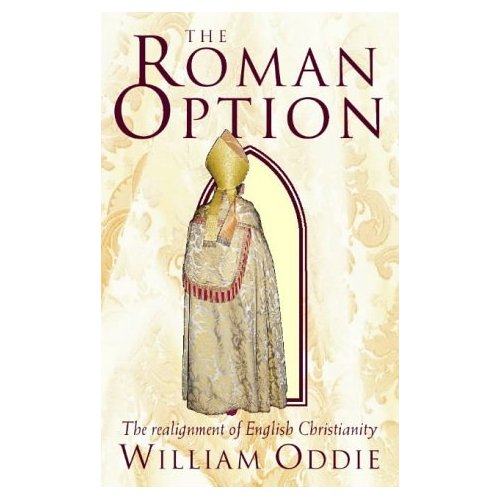Damian Thompson har skrevet en grundig artikkel om dette i the Telegraph – og der sier han bl.a.:
«The faces of many Church of England bishops have turned as purple as their cassocks,» said one commentator. They knew nothing about this Apostolic Constitution in advance: the first official notification was a letter from Dr Williams published yesterday, in which he apologised for the short notice but explained that «I was informed of the planned announcement at a very late stage».
This anger is widely shared by Catholic bishops of England and Wales – and not just because they feel that the Anglicans have been insulted by the Vatican. Pope Benedict XVI decided not to consult the English Catholic bishops about his dramatic offer. Indeed, the Vatican’s own professional ecumenists in the Pontifical Council for Promoting Christian Unity were also kept out of the picture until «a very late stage».
But it is precisely the exclusion of liberal Catholic bishops that has delighted traditionalist Anglicans. It helps explain why, yesterday, Forward in Faith, the umbrella group for conservative Anglo-Catholics, welcomed the Pope’s decision effusively. They do not know how this arrangement will work in practice – «A lot depends on the fine print but so far there is no fine print,» says Stephen Parkinson, director of Forward in Faith – but they know what it will not contain: any provision for a local Catholic bishop to make their services trendy and «relevant».
 I kommentaren til Thompsons stykke referes det også til ei bok som kom ut i 1997 (og som jeg leste da), om katolske biskoper og presters respons til de mange engelske preste-konvertittene i England i 1992/93 – og en mulig måte å løse den unfordringa på om den skulle oppstå på nytt. Slik kan vi lese:
I kommentaren til Thompsons stykke referes det også til ei bok som kom ut i 1997 (og som jeg leste da), om katolske biskoper og presters respons til de mange engelske preste-konvertittene i England i 1992/93 – og en mulig måte å løse den unfordringa på om den skulle oppstå på nytt. Slik kan vi lese:
Dr Oddie, a biographer of G K Chesterton and former editor of The Catholic Herald, outlined a possible future development in which disaffected Anglicans sought to move en masse to the Catholic Church. He defined this movement as “the Roman Option” and suggested it would result in a decisive “Realignment” within English-speaking Christianity.
The book, which is currently out of print, is starting to be talked about again. Some speculate that the Congregation for the Doctrine of the Faith may even have studied it as it worked on the new Anglican provision.
Realignment should be understood as a way in which the two main Christian traditions in England – and ultimately in the other English-speaking countries whose Christianity derives partly or entirely from the English experience – could become more internally coherent without losing the variousness which is the sign of spiritual life.
A movement of Catholic-minded Anglicans into the Catholic Church, in a gradual and manageable way over time, paralleled by a convergence of Methodists and Free Churchmen around the Church of England – all this would be part of the same process. Two great Christian traditions, the Catholic and the Reformed, growing into ever greater internal coherence, the wounds of the past finally healing; and then, one day, possibly in as little as a century or two, errors and apostasies having fallen away like dead skin-cells, the union of all Christian people: that is the ultimate vision that Realignment opens up now.
